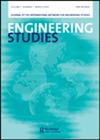客座编辑——美国工程教育中的排斥与包容
IF 1.3
3区 工程技术
Q2 EDUCATION, SCIENTIFIC DISCIPLINES
引用次数: 0
摘要
2019年,《工程研究》出版了我们的第一期关于工程中的男性和男子气概的特刊。1通过今年的特刊《工程教育的排他性和包容性》,我们继续强调学术,对工程(教育)的文化和规范提出创新见解。本期的三篇文章探讨了谁被排除在外,谁被包括在内,以及这些过程是如何发生的。本文章集利用民族志、访谈和文献分析,研究了当前在美国工程教育项目中(重新)产生排斥和包容的话语、政策和实践。前两篇文章确定了谁能做工程和谁是理想工程师的想象中的排斥机制和规范。在《任何人,但不是所有人:本科生工程学生对谁能做工程师的声明》中,杰奎琳·罗德、德里克·J·萨特菲尔德、米格尔·罗德里格斯、艾莉森·戈德温、杰夫·波文、丽莎·本森,Adam Kirn研究了“学生们”关于谁能成为工程师以及在工程文化中需要什么才能成功的说法在对来自四所大学的工科学生的访谈中,他们发现了一个悖论。学生们坚信,任何人都可以做工程,但前提是他们具备特定的特质,比如对工程的热情和工程思维。作者将学生们对美国梦和工程精英政治的话语资源的反应联系起来,得出的结论是,尽管学生们关于谁能胜任工程的话语看似具有包容性,但实际上对那些没有特定特征的人来说是排斥性的。Rachel E.Friedensen、Sarah Rodriguez和Erin Doran在《“理想”电气和计算机工程师的形成:部门文件分析》一书中,使用文件分析方法研究了一所大学电气和计算机工程专业学生规范身份的部门信息。他们发现,部门的文本和图像,如战略计划、时事通讯和ABET自学报告,描绘了一个理想的电气和计算机工程师的形象,他具备技术能力,并因此得到公众认可,他的兴趣被视为理所当然。虽然提到了其他能力,如理解工程对社会和环境的影响,但在课程中没有给予他们空间。此外,文件中的理想工程师是能够管理来自不同背景的个人的主导群体的成员。理想工程师的这种狭隘形象是有问题的,因为它可能会将那些没有看到自己反映在想象中的学生排除在外。作者就各部门如何使其信息更具包容性提出了建议。第三篇文章《转型与停滞:LGBTQA学生为实现更大包容性而预设工程社会实践的探索》着眼于一组学生如何挑战排斥性规范。然而,它也确定了似乎比其他规范更抗拒变革的规范。通过预配置的透镜,本文章由计算机程序翻译,如有差异,请以英文原文为准。
Guest Editorial – Exclusion and Inclusion in U.S. Engineering Education
In 2019, Engineering Studies published our first special issue on men and masculinities in engineering.1 With this year’s special issueonexclusionand inclusion inengineeringeducation, we continue to highlight scholarship that presents innovative insights on the cultures and norms of engineering (education). The three articles in this issue take up questions of who is excluded, who is included, and how those processes happen. Using ethnography, interviews, and document analysis, this collection of articles examines current discourses, policies, and practices that (re)produce exclusion and inclusion in engineering education programs in the United States. The first two articles identify exclusionary mechanisms and norms in the imaginary of who can do engineering and who the ideal engineer is. In ‘Anyone, But Not Everyone: Undergraduate Engineering Students’ Claims ofWho Can Do Engineering’, Jacqueline Rohde, Derrick J. Satterfield, Miguel Rodriguez, Allison Godwin, Geoff Potvin, Lisa Benson, and Adam Kirn examine ‘students’ claims about who can become an engineer and what it takes in engineering culture to be successful.’ In their interviewswith engineering students from four universities, they identified a paradox. The students espoused a belief that anyone could do engineering, but only if they possessed particular traits, such as a passion for engineering and an engineering mindset. The authors connect the students’ responses to the discursive resources of the American Dream and engineering meritocracy, concluding that although the students’ discourses aboutwhocandoengineeringmayappear inclusive, they are actually exclusionary for those without particular traits. In ‘The Making of “Ideal” Electrical and Computer Engineers: A Departmental Document Analysis’, Rachel E. Friedensen, Sarah Rodriguez, and Erin Doran used document analysis methods to examine departmental messaging about the normative identity of electrical and computer engineering students at one university. They found that the departmental texts and images, such as strategic plans, newsletters, andABET self-study reports, paint the picture of an ideal electrical and computer engineer who performs technical competence, is publicly recognized for that, andwhose interest is taken for granted.While other abilities, such as understanding societal and environmental impacts of engineering, arementioned, they are not given space in the curriculum. Additionally, the ideal engineer featured in the documents is a member of a dominant group who can manage individuals from diverse backgrounds. This narrow image of the ideal engineer is problematic because it may serve to exclude students who do not see themselves reflected in that imaginary. The authors identify recommendations for how departments canmake their messagingmore inclusive. The third article, ‘Transformation and Stasis: An Exploration of LGBTQA Students Prefiguring the Social Practices of Engineering for Greater Inclusivity’ looks instead at how exclusionary norms are being challenged by one group of students. Yet it also identifies norms that seem more resistant to change than others. Through the lens of prefiguration,
求助全文
通过发布文献求助,成功后即可免费获取论文全文。
去求助
来源期刊

Engineering Studies
ENGINEERING, MULTIDISCIPLINARY-HISTORY & PHILOSOPHY OF SCIENCE
CiteScore
3.60
自引率
17.60%
发文量
12
审稿时长
>12 weeks
期刊介绍:
Engineering Studies is an interdisciplinary, international journal devoted to the scholarly study of engineers and engineering. Its mission is threefold:
1. to advance critical analysis in historical, social, cultural, political, philosophical, rhetorical, and organizational studies of engineers and engineering;
2. to help build and serve diverse communities of researchers interested in engineering studies;
3. to link scholarly work in engineering studies with broader discussions and debates about engineering education, research, practice, policy, and representation.
The editors of Engineering Studies are interested in papers that consider the following questions:
• How does this paper enhance critical understanding of engineers or engineering?
• What are the relationships among the technical and nontechnical dimensions of engineering practices, and how do these relationships change over time and from place to place?
 求助内容:
求助内容: 应助结果提醒方式:
应助结果提醒方式:


